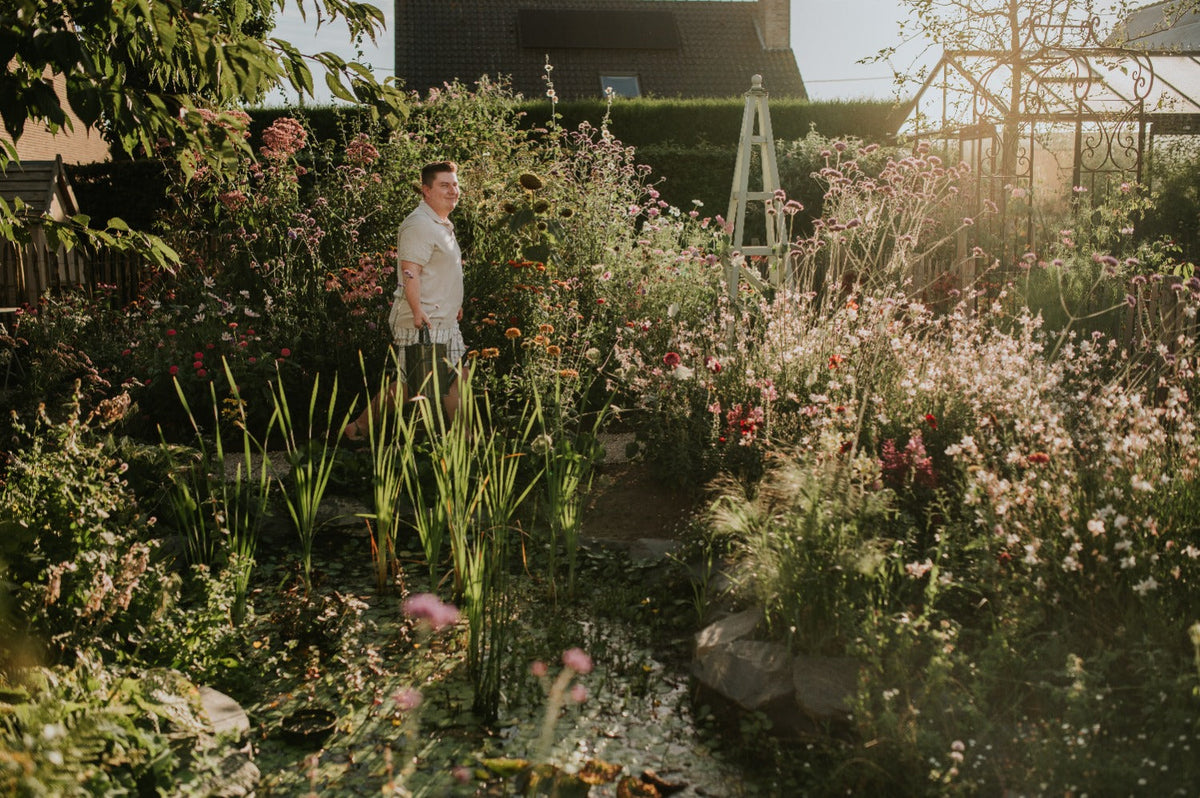
How to Build a Natural Pond: Tips for Wildlife-Friendly Water in Your Garden
|
Tijd nodig om dit artikel te lezen: 3 min
|
Tijd nodig om dit artikel te lezen: 3 min
Integrating water into your garden brings life, because there is no life without water. That was the case millions of years ago in the so-called primordial soup, and it is no different today. With water in the garden you take care of the wildlife in the area , and that is perhaps more important than ever.
I knew very soon, when we first moved into our house, that I wanted a pond. Not too big, because I didn't necessarily want to fish. But a place where salamanders, frogs, toads and other water animals would come. Because it's mainly those kinds of animals that help you in the fight against snails, for example. We also have a couple of hedgehogs that live in the garden, so it had to be a drinking place for them too. And then there are the birds of course. Essential for a garden in balance.
Whether or not there would be a pond was not up for discussion, but it did take some time to think about the ideal spot. I did not want the pond right at the front of the garden, because with possible mosquito plagues in mind and a south-facing garden, it did not seem smart to do that. After all, you do not want a pond to be in the baking sun all day. At the back of the garden I found the ideal spot, at least as far as the position of the sun was concerned. However, there is a - very beautiful - tree in that spot. An ornamental cherry tree that blooms in the spring with beautiful white flowers. Creating a pond close to a tree is not ideal , and is often discouraged, but I have to say that I have not regretted it for a minute. It provides some shade now and then, and the picture is beautiful as a whole. Yes, I have to scoop leaves more often in the fall, but I am happy to accept that. The result is too beautiful.
Because it had to be a pond for the animals, I thought it was important to have shallow places where drinking is easy. Many birds come to bathe or drink and the hedgehogs have also made it their regular drinking place. The pond is made in such a way that the deepest part is 1.20 m deep, then you end up on a plateau of about 90 centimeters and then a sloping surface of 50, 40, 30, 20, 10 centimeters. That is the place where the animals come most often. To be clear: I say natural pond, but of course we made it with a rubber sheet .
There is no pump in our pond, nor extra oxygen. I wanted it all to happen very naturally. There are a lot of plants and therefore also oxygen plants in it, and the rest takes care of itself. We never really have any problems with algae and the animals love it here, because every year frogs and toads come. I also recently saw that our family of salamanders had been expanded again. And what I was afraid of at first: namely a lot of mosquitoes , fortunately is not that bad. I think the frogs like to eat them , because I have never really had any problems.
Did you know that we also have a well-stocked YouTube channel? With over 450 videos, we have a large database of information. Be sure to check out YouTube and subscribe, so you can stay up to date with the latest videos.
In this video Angelo tells you all about how he tackled his natural pond .
The conclusion: I am still happy with our natural pond every day. It is a beautiful spot and it is teeming with life. I realize that this approach to creating a pond is not classic and is not for everyone. But if you are open to this alternative form of adding water to the garden, you will be amazed at what it does to the biodiversity in your garden. By the way, you do not have to choose a large pond. It can be very small and even with a barrel or tub that you put in the ground. So do not be put off by the large ponds that you come across. It can also be different. Smaller, but with a very big effect on everything that crawls and flies around you.


